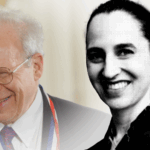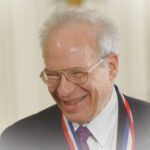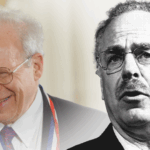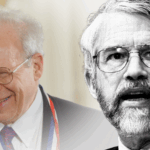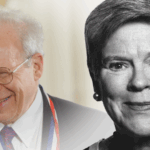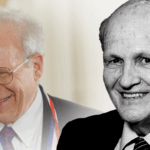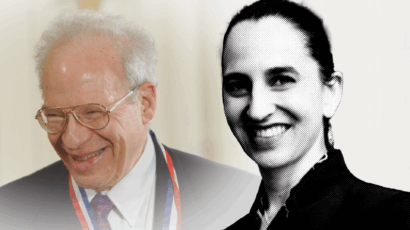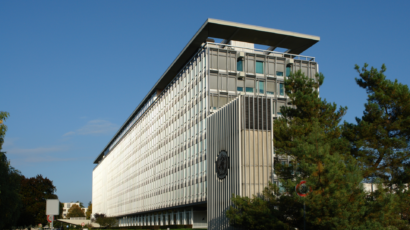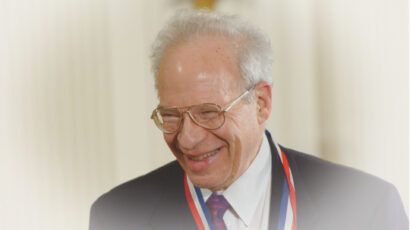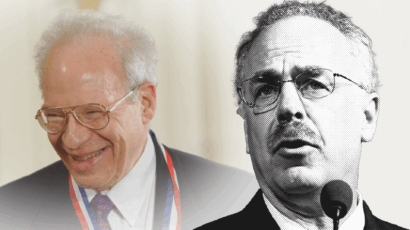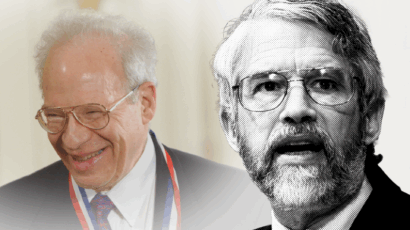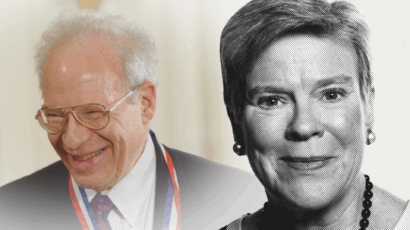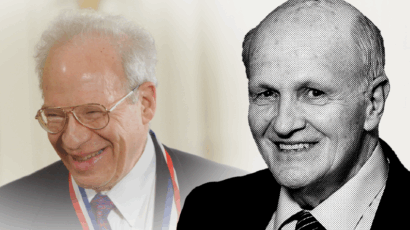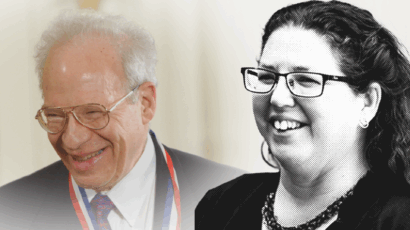After Kim Jong-il
By Mun Suk Ahn | November 16, 2009

On June 1, members of the South Korean National Assembly’s Intelligence Committee received some clarity about who would replace Kim Jong-il as North Korea’s leader. A high official in Seoul’s National Intelligence Service informed them that Kim had designated his 26-year-old third son, Kim Jong-un, as his successor. According to the National Intelligence Service, Kim Jong-il had ordered the North’s military, politicians, and officials in overseas missions to swear allegiance to Kim Jong-un after Pyongyang’s May nuclear test. This succession plan wasn’t entirely surprising. In his 2003 memoir, Kenji Fujimoto, the Kim family’s longtime chef, predicted that Kim Jong-un would replace his father, explaining that he was Kim Jong-il’s favorite. According to Kim Jong-il’s Chef, Kim Jong-nam, the eldest son, lost his father’s confidence after being deported from Japan for using a false passport in May 2001, and Kim Jong-chol, the second son, was seen too weak to lead.
A few months earlier, Kim Jong-il supposedly had appointed Kim Jong-un as inspector of the country’s prominent National Defense Commission, which supervises Pyongyang’s national defense and which Kim Jong-il chairs. The inspector is a low-level position, but Kim Jong-un’s position is expected to soar–much as his father’s did in the 1960s and the 1970s. (Kim Jong-il was named inspector of the Workers’ Party in 1964, and eventually, he was appointed to its second highest position.) To further bolster his son’s standing, prominent Kim family members were named to the commission at about the same time. Specifically, Jang Song-taek, Kim Jong-il’s brother-in-law and a department director of the Workers’ Party, became a member of the commission and appears to be Kim Jong-un’s patron, and O Kuk-ryol, another department director of the Workers’ Party, became the commission’s vice chairman.
To say the least, Pyongyang has a unique political culture that’s hard to understand by any outside standard. It is a pre-modern dynastic state founded in 1948 by Kim Jung-il’s father, Kim Il-sung, who ruled the country for the next 46 years. As a result, most of its prominent political and military appointments are intertwined and based on family networks. For instance, Kim Kyung-hee, Kim Jong-il’s younger sister, controls the country’s Department of Light-Industry, which directs ministries in the cabinet related to the production of smaller industrial goods; her husband, Jang Song-taek, oversees an important department in the Workers’ Party; and Kim Pyong-il, Kim Jong-il’s half brother is ambassador to Poland. Meanwhile, Choe Ryong-hae, the chief secretary of the Workers’ Party North Hwanghae Provincial Committee, is the son of a former minister of the North Korean Armed Forces; and Hong Sok-hyong, the chief secretary of the Workers’ Party North Hamgyong Provincial Committee, is the son of a former vice prime minister.
Such familial networks extend across the North Korean government and help explain its recent provocative behavior–such as its April rocket launch, May nuclear test, and June threat to enrich uranium.
The country’s elites constantly worry about the security of their positions if a successor were to arise from outside the Kim family. At the moment, their fears are particularly acute because Kim Jong-un’s position isn’t secure. His ascension to power has been rather quick, leaving little time to consolidate support, unlike Kim Jong-il who spent decades following a detailed succession plan outlined by his father. (Kim Jong-il’s succession had three stages–first, in 1974, an informal decision was made that he would succeed his father; second, in 1980, he became a standing member of the Workers’ Party Political Bureau; and finally, in 1993, he took his father’s place as chairman of the National Defense Commission.) To ensure a smooth transition, the North’s elite is willing to do whatever it takes to strengthen Kim Jong-un in the eyes of those in the country’s government and military who aren’t blood relatives. The result is a deliberately tense atmosphere intended to strengthen internal solidarity and bolster the succession. This tension will remain until Kim Jong-un is accepted by the military, Workers’ Party, and cabinet.
In this way, it’s not unlike the final moments of Kim Jong-il’s ascension to power, where confrontation with the outside world was used to forge favorable conditions for domestic political change. In April 1993, a month before Kim Jong-il succeeded his father as National Defense Commission chairman, North Korea proclaimed a “state of semi-war” after disputes with the International Atomic Energy Agency and Washington concerning special inspections of its suspected nuclear sites. Two weeks later, the North declared it was withdrawing from the Nuclear Non-Proliferation Treaty (NPT).
The importance of the North’s nuclear weapons. If the North cannot secure long-term regime stability by manufacturing external strife to engender internal solidarity, it will do so by continuing its nuclear program. Although Pyongyang’s nuclear activities date back to the 1950s, the 1994 Agreed Framework curbed its nuclear ambition with promises by the United States to provide light water reactors and by seemingly offering a path toward normalized U.S.-North Korean relations. But once George W. Bush took office and preemption became an official U.S. policy, the North renewed its push for nuclear weapons. And while U.S.-North Korean relations seemed to warm late in the Bush administration’s tenure, in the summer of 2008 any and all perceived political gains disappeared when Pyongyang met its Six-Party Talks obligations and demolished the cooling tower at its Yongbyon nuclear site but the Bush team demanded still more concessions before it would fulfill its own obligations.
A few days later, Kim Jong-il suffered a stroke, and the regime’s interest in nuclear weapons intensified. Now regime survival was the primary issue. In particular, the North’s second nuclear test in May was interpreted by experts in South Korea as a sign that Pyongyang was determined to keep its nuclear capability unless it received a guarantee that the regime’s future was secure. Moreover, after the U.N. Security Council issued a resolution condemning the nuclear test and expanding sanctions against the regime, Pyongyang vowed that it would never give up its nuclear program. Although the North’s nuclear ambitions originally stemmed from external threats–e.g., the United States–it now has two additional functions: (1) to strengthen the regime’s control over its people; and (2) to be used as a bargaining chip for continued international aid.
Ultimately, Pyongyang wants to be treated like Pakistan and India, both of whom possess nuclear weapons outside of the framework of the NPT while still maintaining normal relations with Washington. Pakistan, for instance, receives billions of dollars in U.S. aid despite its nuclear arsenal, and India’s economic ties with the United States only grow stronger even as New Delhi remains firmly opposed to joining the nonproliferation regime in any formal sense. Last year, Washington even agreed to lift its 30-year moratorium on nuclear trade with India, allowing it to assist with New Delhi’s civilian nuclear energy program. North Korea wants similar accommodations.
Whether or not it receives such a deal, history indicates that some sort of negotiations will restart eventually. In 1998, the North began talking with Washington about a missile moratorium even though it had just recently launched a long-range missile. Pyongyang also came back to the Six-Party Talks after another long-range missile launch in July 2006 and a nuclear test that October. The real difference today is the transition in leadership to Kim Jong-un. Because the 26-year-old isn’t established domestically yet, he is probably more apt to rely on the military’s support and back policies that it favors. To truly become a viable leader, though, he should focus on developing the country’s economy, which is in shambles. Obviously, reengaging with the United States and South Korea would help achieve this end. (It’s worth noting that unlike his father, Kim Jong-un was educated abroad, and therefore, he might be more open to negotiating with the international community.)
At the moment, the North appears interested in talking to Washington. In August, an official from Pyongyang’s mission to the United Nations visited New Mexico Gov. Bill Richardson to convey that the North wanted bilateral talks with Washington. This could be interpreted as evidence that Kim Jong-un has established himself in the domestic power structure.
How China and Russia fit in. Beijing has been reluctant to comment on the North’s leadership transition, hoping it can be accomplished without incident. This might explain why it strongly denied that Kim Jong-un had visited China in June, describing such reports as “a story like a 007 novel.” Kim Jong-un’s closest aide did visit China recently, however. It’s likely that he was tasked with informing Beijing about the leadership change, as his visit coincided with Kim Jong-il’s order for overseas North Korean officials to swear their allegiance to his son. Eventually, North Korea also will need Russia’s help to facilitate Kim Jong-un’s ascension.
Until now, Beijing and Moscow have tried to implement a balanced policy toward Pyongyang. But if the North remains reluctant to rejoin the Six-Party Talks or to take part in a meaningful dialogue with the United States, Chinese and Russian support will weaken. It’s doubtful that North Korea could overcome such a split with its patrons, especially China. Beijing accounted for 73 percent of Pyongyang’s annual foreign trade in 2008. China also provides enormous food and energy aid to the North. After North Korea’s second nuclear test, the Chinese Foreign Ministry stated that Beijing was “resolutely opposed” to the test and demanded an end to any activity that might worsen the situation. Beijing is concerned that North Korea’s aggression could cause Japan, Taiwan, and South Korea to develop either nuclear weapons of their own or elaborate missile defense programs–with the help of the United States, something that makes China particularly uncomfortable. In the meantime, Beijing is worried about the potential in North Korea for domestic tumult and the enormous influx of refugees it could bring. This helps explain China’s reluctance to impose tough sanctions on North Korea.
In the context of succession, North Korea (and Kim Jong-un specifically) will need to rely on Beijing more than ever before, as it is the only economic and diplomatic partner Kim Jong-un has in the short-term–along with Russia, of course. Plus, Chinese and Russian support will be crucial to legitimizing him both domestically and internationally.
Barack Obama weighs in. During its first year in office, the Obama administration has carefully watched the situation in North Korea. When Secretary of State Hillary Clinton visited the region in February, she specifically mentioned that a crisis was possible when the leadership transfer formally took place. Likewise, at a June conference hosted by the Center for Strategic and International Studies in Washington, a U.S. official who was quoted anonymously said that he didn’t believe North Korea would return to the Six-Party Talks until succession was settled. It would appear that the U.S. administration is taking a wait-and-see approach and adjusting its diplomatic strategies accordingly.
That could be part of the reason why the Obama administration has been sending contradictory messages to the North. On the one hand, it frequently talks about how it won’t reward North Korea’s provocative behavior; yet on the other hand, it states that it won’t abandon diplomacy. An example of this helter-skelter approach in practice: In March, Washington offered to send its special representative for North Korea policy, Stephen Bosworth, to Pyongyang to discuss the nuclear issue. But once Pyongyang accepted, the United States reversed course, insisting that the North return to the Six-Party Talks first.
Obama must face one reality, however: It will take a long time to fully complete the leadership transfer from Kim Jong-il to Kim-Jong-un because the elder Kim’s health isn’t critical at the moment. (Kim Jong-il met with former U.S. President Bill Clinton in August for more than three hours, and he frequently visits industrial areas throughout the North.) Therefore, the current U.S. “wait-and-see” strategy could backfire, as Washington might be waiting for a very long time to see the younger Kim take control. In the meantime, the North Korean nuclear program could reach a point of no return.
Together, we make the world safer.
The Bulletin elevates expert voices above the noise. But as an independent nonprofit organization, our operations depend on the support of readers like you. Help us continue to deliver quality journalism that holds leaders accountable. Your support of our work at any level is important. In return, we promise our coverage will be understandable, influential, vigilant, solution-oriented, and fair-minded. Together we can make a difference.
Keywords: Kim Jong-il, Kim Jong-un
Topics: Nuclear Weapons, Opinion


